Bantam chickens are miniature versions of standard chicken breeds, and they are becoming increasingly popular among backyard chicken enthusiasts.
These small and adorable birds are perfect for those who have limited space but still want to enjoy the benefits of raising chickens.
Bantams also come in many different colors and types, making them a great choice for those who want to add some variety to their flock.
Bantam chickens are not only cute and charming, but they can also be great egg layers.
While they may not lay as many eggs as their standard-sized counterparts, they still produce a good amount of eggs for their size.
Bantams also make great pets and are known for their friendly and docile personalities.
In this article, we will discuss:
- What bantam chickens are and their history
- Types of bantam chickens
- How to care for bantam chickens
- Breeding bantam chickens
- Pros and cons of owning bantams
- And some frequently asked questions
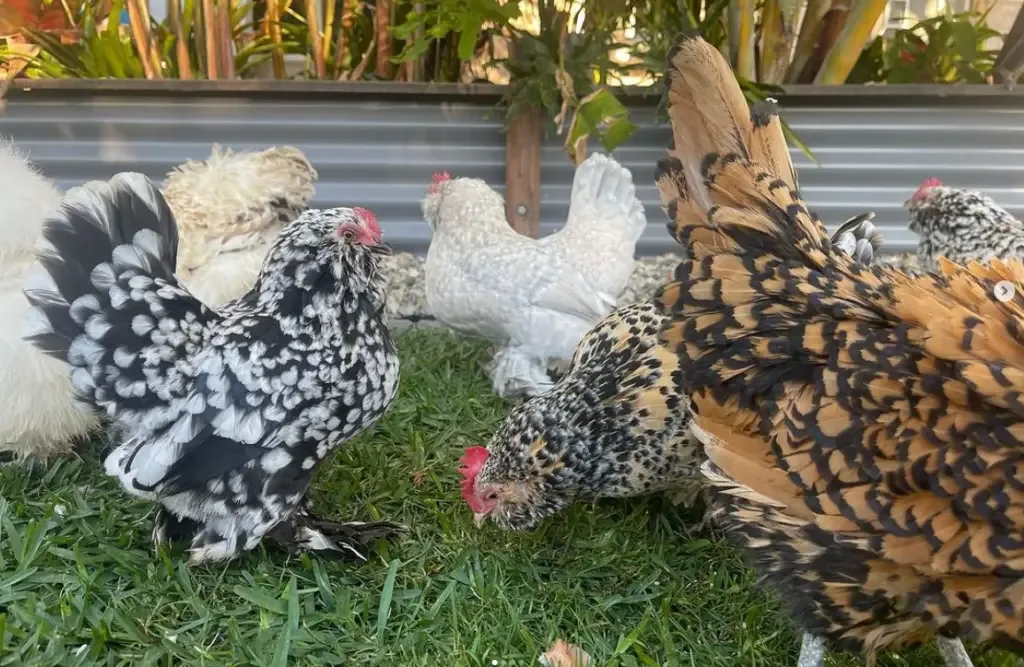
What are Bantam Chickens?
Bantam chickens are simply miniature versions of regular chickens.
They are smaller in size, typically ranging from one-half to two-thirds the size of regular birds.
Bantam chickens come in a variety of breeds, with over 400 varieties recognized by the American Bantam Association.
The word “bantam” comes from the seaport of Bantan, Indonesia, where many of these small breeds were discovered.
There are three types of bantam chicken classifications:
- True
- Miniaturized
- Developed
True bantams are breeds that are naturally small and have no standard-sized counterpart. For instance, a Nankin or a Sebright can only be bantam-sized.
Miniaturized bantams are breeds that have been selectively bred for small size, while developed bantams are breeds that have been created by crossing standard-sized breeds to produce a smaller version. For example, Rhode Island Red, Cochin, or Orpingtons can be either regular-sized or bantam-sized.
Developed Bantams are naturally tiny breeds that have been further developed into bantam versions. Some breed examples are Belgian, Japanese, and Pekin Cochin.
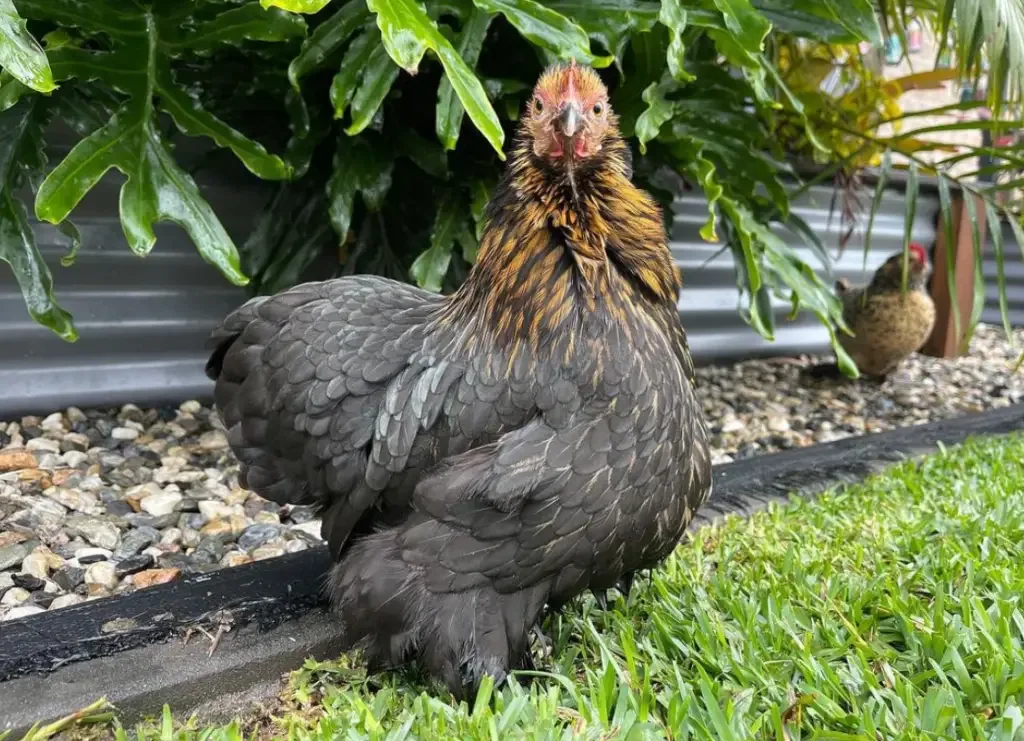
History of Bantam Chickens
Bantam chickens have a rich history that dates back to the 16th century.
The word “bantam” is derived from the seaport city of Bantam in western Java, Indonesia.
European sailors restocking on live fowl for sea journeys found the small native breeds of chicken in Southeast Asia to be useful, and any such small poultry came to be known as a bantam.
The first known bantam chickens were brought to Europe in the 1500s, and they quickly became popular among the wealthy.
These miniature chickens were kept as pets and were often featured in paintings and other works of art.
In the United States, bantam chickens were first introduced in the late 1800s, and their popularity quickly grew.
They became a favorite among backyard chicken keepers, as they were easy to keep and required less space than standard breeds.
Over the years, breeders have developed many different varieties of bantam chickens, including the Nankin, Sebright, and Rosecomb breeds.
Miniaturized bantams were made from a standard breed of Rhode Island Red, Cochin, or Orpingtons.
Developed bantams are small breeds that have been further developed with some help from humanity.
Today, bantam chickens are still popular among backyard chicken keepers and are often kept for their ornamental value.
They are also used for egg production and meat, although some are not as productive as standard-sized chickens.
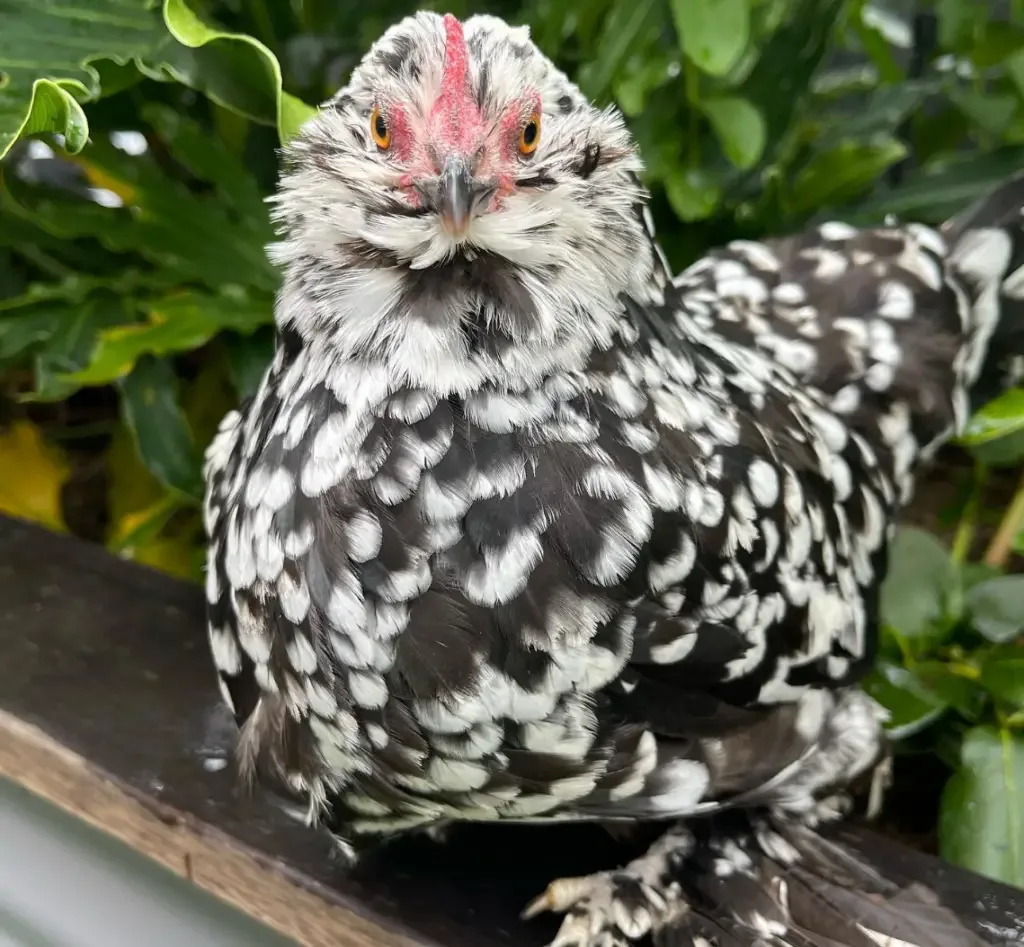
Different Bantam Chicken Breeds
Bantam chickens are small in size and come in a variety of breeds.
Here are some popular bantam chicken breeds:
Pekin Bantam
The Pekin Bantam is a popular breed of bantam chicken that originated in China.
It is known for its fluffy feathers and round, plump body.
Pekin Bantams are friendly and easy to handle, making them a great choice for families with children.
They are also good layers, producing around 150-200 small eggs per year.
Sebright Bantam
The Sebright Bantam is a unique breed of bantam chicken known for its striking appearance.
It has laced feathers that give it a distinctive look, and it is one of the few breeds of chicken that has no tail feathers.
Sebright Bantams are known for their friendly personalities and can make great pets.
However, they are not known for their egg-laying abilities, producing only around 60-80 small eggs per year.
Dutch Bantam
The Dutch Bantam is a small breed of bantam chicken that originated in the Netherlands.
It is known for its striking colors and patterns, and it comes in a variety of colors, including black, blue, and silver.
Dutch Bantams are friendly and active, making them a great choice for backyard flocks.
They are also good layers, producing around 150-200 small eggs per year.
Belgian d’Anver Bantam
The Belgian d’Anver bantam is a true bantam, meaning it has no standard-sized counterpart.
It is a small breed, weighing only around 20-26 ounces, and is known for its friendly and docile nature.
The Belgian d’Anver bantam comes in a variety of colors, including blue, quail, and porcelain.
Booted Bantam
The booted bantam, also known as the Dutch booted bantam, is a small and ornamental breed.
It is named for the feathering on its feet, which resembles boots.
Booted bantams come in a variety of colors, including black, blue, and white, and are known for their friendly and curious personalities.
Cochin Bantam
The Cochin bantam is one of the most popular bantam breeds.
It is a fluffy and ball-shaped bird that comes in a variety of colors, including black, blue, and buff.
The Cochin bantam is known for its friendly and docile personality and is a great choice for families with children.
Japanese Bantam
The Japanese bantam is a small and ornamental breed that is known for its striking appearance.
It has a short, stocky body and a large, upright tail.
Japanese bantams come in a variety of colors, including black-tailed white, black, and mottled.
They are known for their friendly and inquisitive personalities.
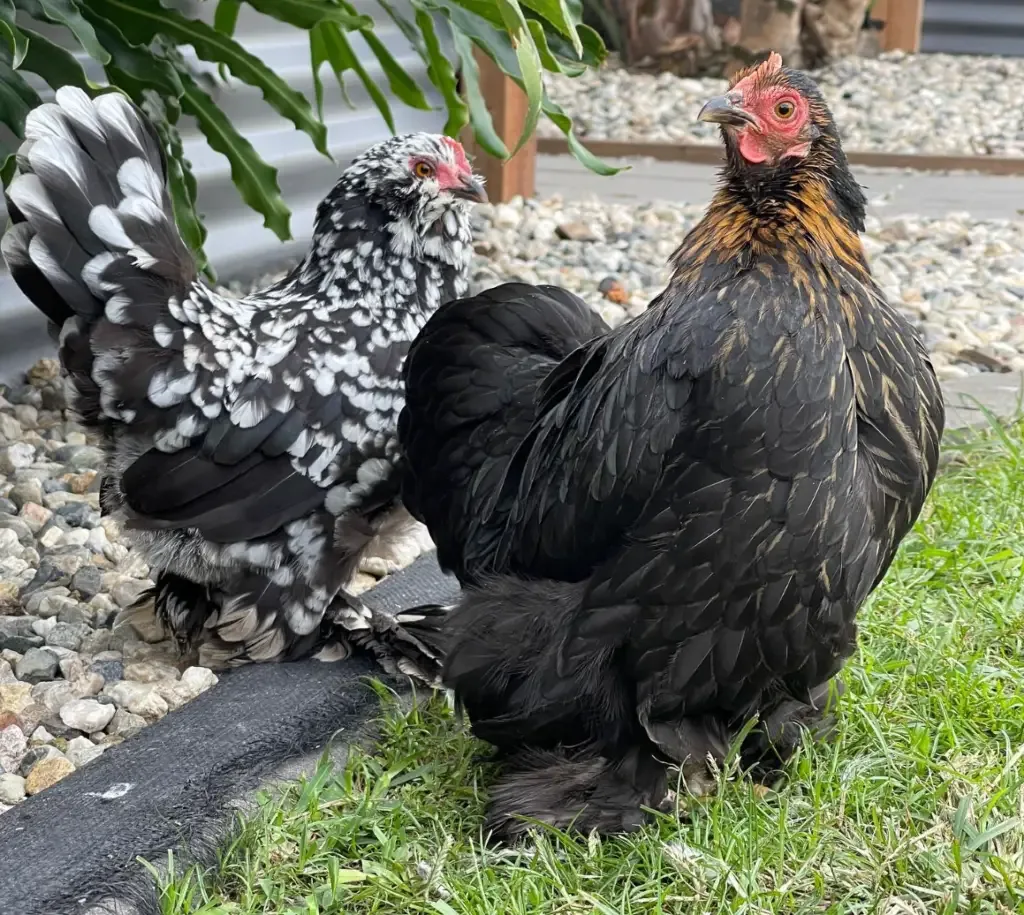
Characteristics of Bantam Chickens
Bantam chickens are popular among backyard chicken keepers because of their size and unique characteristics.
One of the advantages of owning bantam chickens is that they require less space than regular chickens.
They are ideal for people who have limited space in their backyard or live in urban areas.
Bantam chickens can also be easier to handle and care for due to their small size.
Bantam chickens are known for their unique personalities and are often described as friendly, docile, and curious.
They are also good egg layers, with some breeds laying up to 200 eggs per year.
Bantam chickens make great pets and are a popular choice for families with children and other pets.
Size & Weight
Bantam chickens are significantly smaller than standard breeds, with most weighing between one and two pounds.
They are generally less than a foot tall and have proportionally smaller bodies and features than their larger counterparts.
Despite their small size, bantams are active and energetic birds that enjoy foraging and exploring their surroundings.
Color Variations
Bantam chickens come in a wide range of colors and patterns, with some breeds being more colorful than others.
There are also some bantam breeds that are much fluffier than other breeds as well.
Some of the most popular color variations include black, white, red, and blue.
Some breeds, such as the Mille Fleur d’Uccle, have intricate patterns of feathers that make them a striking addition to any flock.
Temperament
Bantam chickens are known for their friendly and docile temperament, making them a popular choice for families with children.
They are often kept as pets because of their small size and gentle nature.
Bantam chickens are also relatively quiet birds, making them a good choice for urban or suburban environments where noise restrictions may apply.
They are a charming and delightful addition to any backyard flock due to their small size, colorful feathers, and friendly temperaments.
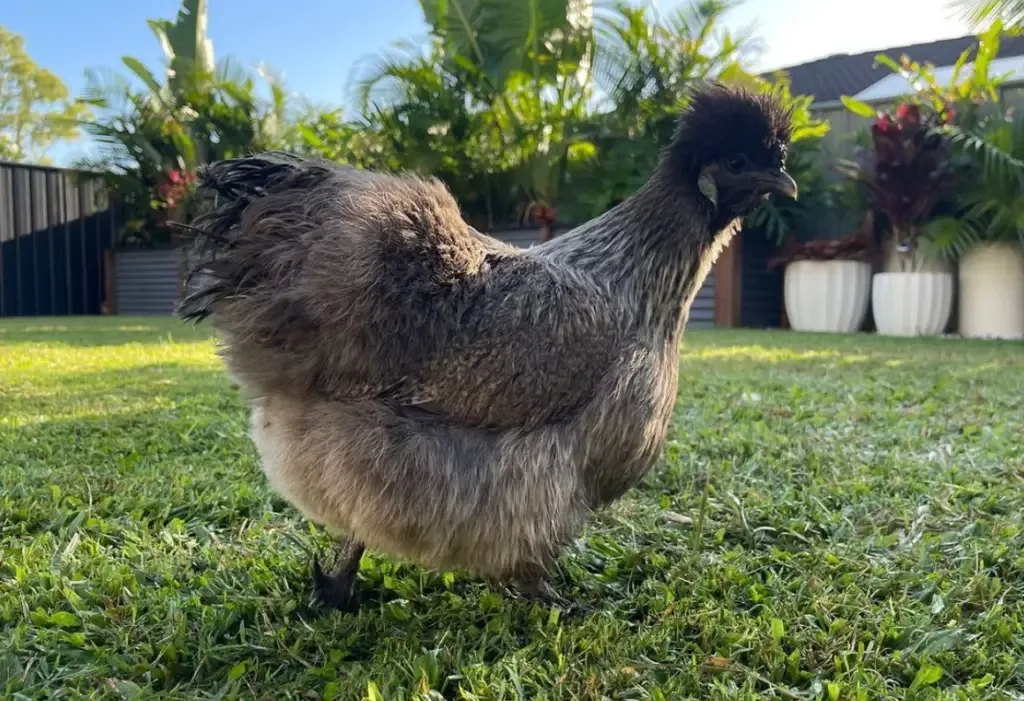
Bantam Chicken Care
Although bantam chickens are small in size, they still require proper care to stay healthy and happy.
Here are some essential aspects of bantam chicken care:
Feeding
Bantam chickens have similar dietary requirements as standard-sized chickens.
They need a balanced diet that includes protein, carbohydrates, vitamins, and minerals.
You can provide them with a high-quality commercial chicken feed and then substitute with some added vegetables and fruits.
Some bantam chicken breeds, such as Silkies, have trouble eating large pellets, so it’s best to give them smaller feed or crumble. Their treats and snacks should also be shredded or torn into small, bite-sized pieces.
It’s also important to ensure they have access to fresh, clean water at all times.
Additionally, bantam chickens need less food than standard-sized chickens, so make sure to adjust their portions accordingly.
Housing
Bantam chickens require a coop that is secure, dry, and well-ventilated.
The coop should be spacious enough to allow each chicken to move around comfortably.
The recommended coop size is 1-2 square feet per bantam chicken, and the run size is 2.5-4 square feet per bantam chicken.
It’s also important to provide nesting boxes that are 10″x12″x10″ and roosting space of 4-6″ per bantam chicken.
Bantam chickens are susceptible to cold temperatures, so it’s essential to keep their coop warm during winter months.
You can use a heat lamp or a heated pad to keep them warm.
During hot summer months, make sure the coop is well-ventilated to prevent heatstroke.
Healthcare
Bantam chickens require regular health checks to ensure they are free from diseases and parasites.
You should inspect them for signs of illness, such as lethargy, loss of appetite, or abnormal droppings.
Additionally, they should be dewormed regularly and provided with vaccinations to protect against common diseases such as Marek’s disease.
It’s also essential to keep their coop clean and dry to prevent the buildup of harmful bacteria and parasites.
Their water and food containers should also be cleaned regularly and their bedding should be replaced often to ensure they have a clean, healthy environment.
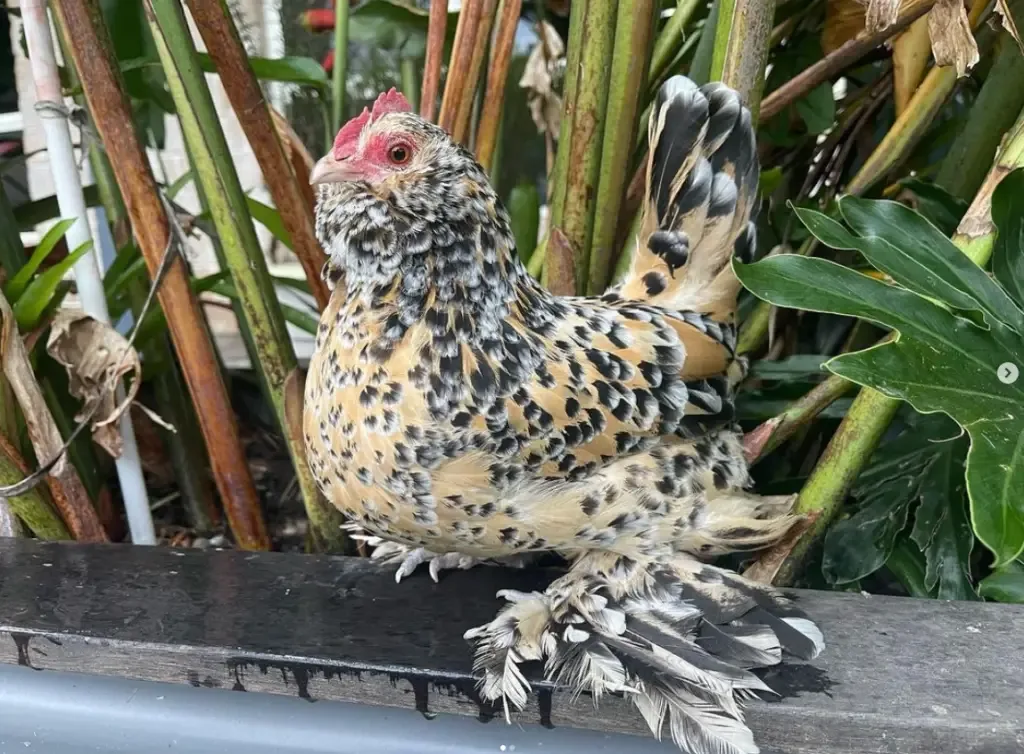
Bantam Chicken Egg Production
Bantam chickens are popular among backyard chicken keepers due to their smaller size and unique personalities.
However, one of the most common questions about bantam chickens is their egg production.
Here is what you need to know about bantam chicken egg production:
Egg Laying
Bantam chickens are not known to be the best egg layers.
However, some bantam breed’s egg production is similar to that of standard-sized chickens.
Depending on the breed, a bantam chicken can lay between 150 to 200 eggs per year.
It is important to note that bantam eggs are smaller in size compared to standard-sized eggs with most bantam-sized eggs being around ½-⅓ the size of a standard chicken egg.
Egg Size
Bantam eggs are about one-half to one-third the size of standard-sized eggs.
The exact size of the egg will depend on the breed of the bantam chicken.
For example, a Silkie bantam chicken lays small, round eggs that are slightly bigger than a quarter, while a Cochin bantam chicken lays larger, oval-shaped eggs.
To use bantam eggs in recipes, you would use 3-5 bantam eggs for every 1 chicken egg.
Egg Color
Bantam chicken eggs are known to come in a variety of different colors.
These colors include:
- White
- Cream
- Brown
- Blue
- Green
The egg color will depend on the breed of the bantam chicken.
Egg Taste
The taste of bantam chicken eggs is similar to that of standard-sized chicken eggs.
However, due to their smaller size, bantam eggs may have a slightly higher yolk-to-white ratio, making them richer in flavor.
Broodiness
Bantam chicken broodiness levels strongly depend on the breed of the bantam chicken.
Some tend to go broody easier and become great mothers while others have no interest in their eggs.
Bantam Chickens as Pets
Bantam chickens are a popular choice for those who want to keep chickens as pets.
They are smaller in size compared to regular chickens, making them ideal for people with smaller backyards or urban areas.
Another benefit of keeping bantam chickens as pets is that they are easier to handle than larger chickens.
They are known for their friendly and docile nature, making them great companions for children and adults.
Bantam chickens are also less noisy than larger chickens, making them a good choice for people who live in urban areas.
Another advantage of keeping bantam chickens as pets is that they require less space and food than larger chickens.
They can also be kept in smaller coops and runs, which means they are more affordable to maintain.
Bantam chickens also lay smaller eggs, which can benefit those who don’t need a ton of eggs.
When it comes to choosing a breed of bantam chicken as a pet, there are many options available with some popular breeds including the Silkie, Sebright, Cochin, and Polish.
Each breed has its own unique characteristics, such as feather color, egg color, and temperament.
It’s important to research each breed individually to choose one that fits your lifestyle and needs.
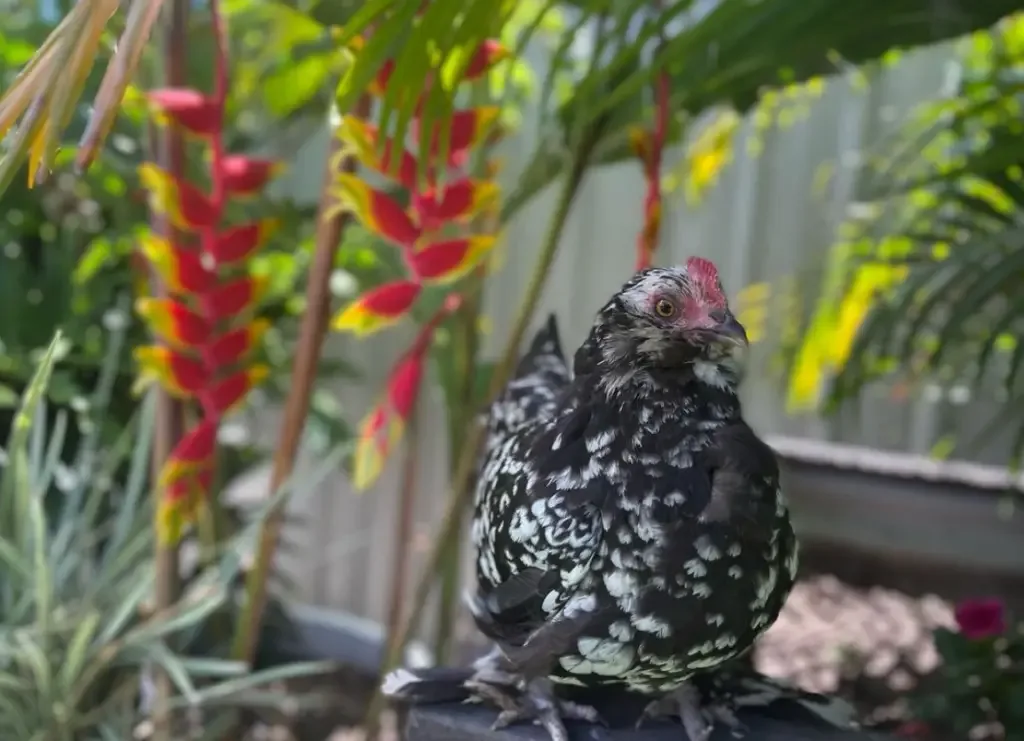
Pros & Cons of Raising Bantam Chickens
Bantam chickens are a popular choice for backyard chicken keepers due to their small size and unique characteristics.
However, like any other breed of chicken, there are both benefits and challenges to raising bantams.
Here are some of the pros and cons of owning and raising bantams:
Pros
- Space Requirements – Bantams require much less space than standard-sized chickens, making them ideal for those with limited backyard space. This also makes transporting and handling them easier due to their smaller size.
- Egg Production – Bantams lay smaller eggs than standard-sized chickens but they tend to lay more consistently. This means that bantams can provide a steady supply of eggs for their owners throughout the year.
- Personality – Bantam chickens are known for their friendly and curious personalities. They are often more docile and easier to handle than standard-sized chickens, making them a great choice for families with children.
Cons
- Predators – Due to their smaller size, bantam chickens are more vulnerable to predators such as hawks, cats, and other wildlife. It is essential to ensure that their coop and run are secure and predator-proof to keep them safe.
- Feeding – Because bantams are smaller than standard-sized chickens, they may have difficulty eating larger pellets or grains. It is important to provide them with smaller-sized feed or to grind their food to a smaller size. They also need their fruits, vegetables, and other treats cut or shredded into smaller pieces.
- Breeding – Breeding bantams can be challenging due to their small size. Using an incubator to hatch their eggs may be necessary, as they may have difficulty sitting on them themselves. Additionally, bantam chicks require extra care and attention to ensure their survival because of their small size.
Final Thoughts
Overall, raising bantam chickens can be a rewarding and enjoyable experience.
Whether you are limited on space or just want to keep a flock of cute little chickens, bantams are a great option.
However, it is important to do research on which breed works best for your environment, space limitations, and personality.
Doing so will provide years of enjoyment and companionship from your bantams.
Frequently Asked Questions
What are the best Bantam chickens for pets?
Bantam chickens are great pets due to their small size and friendly personalities.
Some of the best bantam breeds for pets include Silkies, Cochins, and Plymouth Rocks.
These breeds are known for their docile temperaments and are easy to handle.
Are bantam chickens good egg layers?
Bantam chickens are not known for their egg-laying abilities.
They lay smaller eggs than regular chickens and do not lay as many eggs.
However, some bantam breeds, such as the Sebright and the Japanese bantam, are known to be good egg layers.
What is the temperament of bantam chickens?
Bantam chickens are known for their friendly and docile temperaments.
They are easy to handle and make great pets for families with children.
However, like all chickens, they can become aggressive if they feel threatened or if they are not handled properly.
Where can I find mini bantam chickens for sale?
Mini bantam chickens can be found at local hatcheries, farm supply stores, and online retailers.
It is important to do research and find a reputable breeder or seller to ensure the health and well-being of the chickens.
What are the benefits of raising bantam chickens?
Bantam chickens are great for small backyard flocks due to their small size and easy-to-manage nature.
They are also great for families with children due to their friendly personalities.
Additionally, bantam chickens are great for urban and suburban areas where space is limited.
Do bantam chickens lay smaller eggs than regular chickens?
Yes, bantam chickens lay smaller eggs than regular chickens.
However, the size of the eggs depends on the breed of bantam chicken.
Some bantam breeds, such as the Sebright and the Japanese bantam, lay eggs that are similar in size to regular chicken eggs.

